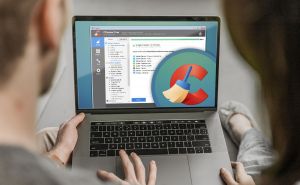 How to overclock your hardware
How to overclock your hardware
Overclocking is a term related to pushing your hardware components to a better performance and speed. You can exceed the manufacturer limits of your graphics cards, GPU, or CPU. There are dozens of overclocking programs that help you boost up the performance of your PC. These applications might prove to be of good use if you wish to easily improve your gaming experience while playing highly demanding games, without buying new hardware parts or spending much of your time.
In this guide, I will show you how to overclock a desktop PC as well as how to overclock a laptop.
Tutorial assets
You will need to download the following software to follow along with this tutorial.
How to overclock a CPU
Overclocking CPU refers to improving the clock speed that the CPU operates at. This solution is usually used by gamers or computer hardware specialists who wish to easily increase the speed and performance of their systems. Before overclocking your CPU, you first need to run a CPU stress test. There are dozens of Windows apps that help you complete the aforementioned task, such as Prime95, SuperPI, or IntelBurnTest.
If you're looking for an Intel overclocking software, then you can try the Extreme Tuning Utility app. However, here I will show you how to overclock AMD CPU by using the AMD OverDrive app.
Step 1
Download and install the app from the AMD website.
Step 2
Head to the Clock/Voltage tab and configure the overclocking settings according to your needs.
Configuring Clock Settings In AMD OverDrive
Configuring Voltage Settings In AMD OverDrive
How to overclock a graphics card
Overclocking your graphics card might give your favorite games a considerable boost. Like with the CPU, it's important to check your system's stability before overclocking your graphics card. Prime95 helps you easily run a GPU stress test on your Windows PC. Once you get the results you need, you can start using the overclocking utility of your choice. Here I will show you how to overclock GPU for Nvidia graphics cards. Since the Nvidia overclock tool is obsolete, I used the MSI Afterburner app. Here's how to use MSI Afterburner for overclocking your graphics card:
Step 1
Download and install the app on your PC.
Step 2
Configure the GPU settings according to your needs. Be careful while moving the scroll bars as the changes are applied in real-time.
MSI Afterburner
Optional: An alternative to using MSI Afterburner comes from ASUS GPU TWEAK, an ASUS overclocking software that helps you complete the aforementioned tasks and works with both Nvidia and AMD graphic cards.
ASUS GPU TWEAK
How to overclock RAM
Many users opt to overclock only their CPU or graphics cards. However, overclocking RAM might also prove to be a great solution for improving the performance of your system, especially when working with your desktop applications or completing file management-related tasks. Of course, you will need to check your system's stability before overclocking the RAM on your desktop PC or laptop. Here's what you need to do in order to overclock your RAM:
Step 1
Reboot your desktop PC or laptop. Head to the BIOS settings (usually by hitting the F2 key).
Step 2
Find the options that are related to RAM. Increase the RAM voltage value to the next available one. For example, you could go from 2000MHz to 2200MHz. Run a stress test again to check your system's stability.
Overclocking RAM In BIOS
How to overclock your monitor
Overclocking your monitor refers to increasing your screen's refresh rate. This solution is usually deployed by gamers to help them improve their gaming experience. Unlike the aforementioned overclocking solutions, this one's a lot more simple and there's no risk of harming the monitor in the process.
I used a desktop PC with an Nvidia graphics card and a PLS monitor. Here's what you need to do in order to overclock your monitor:
Step 1
Launch the Nvidia Control Panel app on your PC.
Step 2
Expand the Display section and select the Change option. Then, click the Customize button and configure the monitor settings according to your needs. By default, the refresh rate value is 60Hz. Simply go up to 120Hz and click the Test button. Apply the changes if the test offered you the results you need.
Overclocking Monitor From Nvidia Control Panel
Conclusion
Clearly, it wouldn't be a smart thing for a user with little computer experience to complete the aforementioned overclocking tasks as the risk of frying hardware devices in the process is pretty high. So, make sure you have the necessary computer knowledge before attempting to push your hardware components to better speeds.
Alternative downloads
-
 AI Suite 3
free
windows
ASUS AI Suite 3 is an intuitive central hub that provides access to the vast majority of ASUS monitoring and control utilities on your motherboard.
Download
AI Suite 3
free
windows
ASUS AI Suite 3 is an intuitive central hub that provides access to the vast majority of ASUS monitoring and control utilities on your motherboard.
Download
-
 ASUS GPU Tweak
free
windows
Utility that allows you to tweak, tune and overclock your graphics card.
Download
ASUS GPU Tweak
free
windows
Utility that allows you to tweak, tune and overclock your graphics card.
Download





Comments
Subscribe to comments